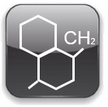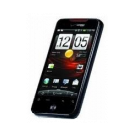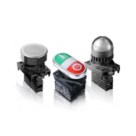Blends
Thermoplastics > Alloys
| Alloys and Blends | ||||||||
It is possible to modify some properties of polymers deficient in alloys, also called blend or alloy. When the polymers are compatible with the matrix, the resulting properties are studied for special applications. By controlling the formulation of the material you can achieve a balanced property synergistic effect. Blends, also called alloy, alloy or blend, compared with the processes of synthesis and chemical modification have a big advantage, so proliferate research on mixtures, currently there are thousands of patents and hundreds of mixtures Developing. Blends are developing formulations to predict the behavior of the ability to combine two or more polymers. |  | |||||||
| Properties | ||||||||
The blends PC / ABS have poor chemical resistance and thermal stability are the main drawbacks. Butadiene rubber in ABS undergoes a chemical aging under UV radiation decreases the mechanical properties and color changes. The ASA terpolymer where the butadiene rubber in ABS is replaced with acrylic rubber solves the problem of degradation of butadiene. |  | |||||||
Compatible alloys | ||||||||
They are those with a finely dispersed phase and good adhesion between them, are normally homogeneous at the macroscopic level and commercially attractive. |  | |||||||
| Incompatible alloys | ||||||||
They are blends with a marked phase separation and with very poor properties that have no direct commercial application. |  | |||||||
| compatibilized blends | ||||||||
They are also called alloys and mixtures are incompatible to another compound or by processing technique one is obtained stable morphology which can be applied commercially. In the case of mixtures of PC and styrene-acrylonitrile (SAN), support is required for mixtures of PC / ABS, PC / PET, PA / ABS, PET / PE and PC / ASA to improve the interaction energy. PC and ABS are immiscible and require groups of polarization to reduce the interfacial tension between the phases. | ||||||||
| Properties | ||||||||
| ||||||||
| Products Range | ||||||||
| ||||||||
| Preparation methods for mixtures | ||||||||
The preparation of polymer blends may be carried out by various techniques, some of which are discussed below mechanical mixing materials either in powder or granules, they are fed to a mixing device which exerts shear ensuring even at temperatures above the melting of the polymers involved and subsequently the resulting mixture is granulated distribution. This is the predominant commercial method for preparing mixtures. |  | |||||||
Mixed in solution | ||||||||
The polymers are dissolved in a cosolvent and subsequently by evaporation of the solvent a film is formed. Solution blending reduces the likelihood of thermal degradation of the polymers, as it is carried out in a solvent at low temperatures and low shear. Contamination of the mixture with solvent and residual potential phase separation or selective precipitation are some of the risks of this method of preparation. |  | |||||||
| Co-precipitation of polymers | ||||||||
| The polymers are dissolved in a cosolvent and mixed into the solution and then coprecipitated by adding them in a vessel containing another compound (nonsolvent). The mixtures obtained by coprecipitation a fairly homogeneous product is obtained, since the entanglement between polymer molecules is promoted. |  | |||||||
| Compatibilizing | ||||||||
Few pairs of polymers form miscible blends and the reason why is not mixed entropy. Entropy high in an amorphous polymer. Entropy is the name scientists give to the disorder. By low entropy of mixing, most polymers are immiscible, the key for successful mixtures of this type, is the use of compatibilization. The compatibilization may involve the addition of another component, usually a bi-functionalized polymer or the application of a process or technique deprocesado. Only a few pairs of polymers are blended. Most do not. But there are also pairs of polymers are sometimes mixed, sometimes not. Variables that one can control to make mixed or not, are generally temperature and composition. | ||||||||
| Compatibilizing effects | ||||||||
| ||||||||
| A successful compatibilization of polymer blends is necessary: | ||||||||
| ||||||||
| Transparency | ||||||||
A binary alloy, if amorphous miscible and will be homogeneous and present a single index intermediate to the refractive pure polymers, having no dispersed particles will be transparent. However if it is immiscible depending on the size of the dispersed particles scatter light system. | ||||||||
| Applications | ||||||||
These alloys could be applied in the manufacture of automotive components and electronics also the most important applications are found in household items such as buckets, tubs, plates and glasses; in containers such as bottles for juice, chemicals, pharmaceuticals and water tanks. soft drinks boxes, industrial containers, pallets, toys, caps and pipes are also made. | ||||||||







